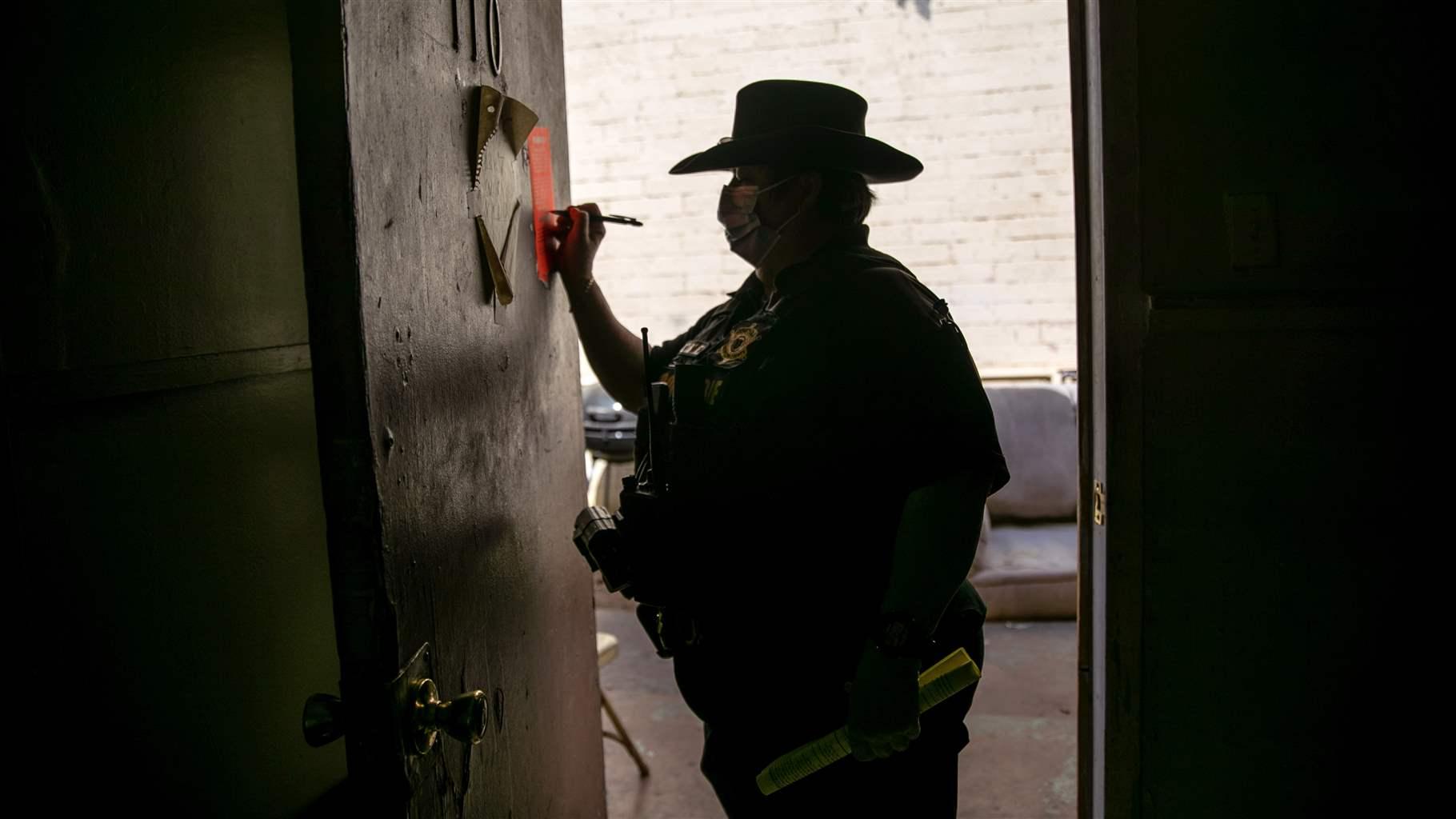Pandemic-Driven Economic Slowdown Puts Renters at Risk of Housing Loss
Nationwide, courts take varied approaches to eviction cases as tenants face uncertainty

The 44 million U.S. households in rental housing face myriad challenges when landlords file eviction cases against them in housing court—challenges that can create increasingly grave consequences as the coronavirus pandemic wears on and unemployment remains stubbornly high nationwide.
When these tenants find themselves in housing court, they have legal representation only about 10% of the time. Landlords, meanwhile, have lawyers 90% of the time. That disparity can result in renters having to negotiate with trained professionals as their housing hangs in the balance. And the coronavirus pandemic has exacerbated long-standing challenges: The risk of eviction has increased for many renters at a time when losing housing could pose serious health risks, and they have to scramble to figure out how to respond to eviction court cases.
States and the federal government have responded to widespread unemployment and increased eviction risks with measures to keep people in their homes. At the same time, the state court systems that process and manage eviction cases are playing a key role in protecting housing for tenants across the country.
As pandemic shutdowns spread in March, courts began issuing emergency orders that halted eviction filings, delayed eviction hearings, and barred enforcement of post-judgment orders that would compel people to leave their homes, all to prevent massive housing destabilization and increased homelessness amid a public health emergency. According to Stanford University’s LegalFaq webpage, 43 states (plus the District of Columbia) issued some type of statewide guidance on evictions.
In Washington, Congress placed a moratorium on evictions through the Coronavirus Aid, Relief, and Economic Security (CARES) Act. That action prohibited landlords from evicting tenants living in properties that receive certain types of federal assistance or are subject to a federally backed loan for nonpayment of rent. As the federal protections expired July 24, courts, renters, and landlords again faced a flood of eviction cases, mounting unpaid rent, and, for some tenants, the prospect of homelessness.
As of August, 28 states had allowed eviction-related pandemic protections to expire, while 22 maintained some level of protection.
All of these measures were intended to be temporary and could result in increased eviction filings, hearings, and orders for enforcement once they expire. Some experts have estimated that 30 to 40 million households could face eviction in the last quarter of 2020.
In response to this possibility, the Centers for Disease Control and Prevention in September issued a nationwide moratorium on evictions, effective through Dec. 31. CDC instituted this executive branch action apart from the CARES Act moratorium enacted by Congress that expired in July. But the agency does not have the ability to allocate financial aid to the states. Under the moratorium, landlords may not evict tenants who present a declaration stating that they meet specific criteria related to the pandemic.
Across the country, whether states are implementing the CDC moratorium or imposing their own more protective standards, state courts are playing a significant role in ensuring that tenants stay in their homes. In those states affected by the moratorium, court leaders are slowly determining the impact on their operations, and their approaches have varied widely.
As of mid-October, 39 states and the District of Columbia had issued no guidance for implementation of the moratorium. Seven states adopted some guidance materials, and a few posted CDC-related information on their websites.
Local courts in six states adopted orders regarding the CDC guidance. Only New Hampshire, Rhode Island, and Texas adopted orders with statewide reach implementing the federal mandate.
The Rhode Island District Court, for example, issued an administrative order that requires landlords to notify the court when they receive a CDC declaration from a tenant with a pending hearing so that the hearing can be canceled or postponed until after the moratorium expires. The order also requires that landlords confirm they have not received a declaration from a tenant when filing an eviction case.
In New Hampshire, landlords must submit an affidavit verifying that an eviction action is exempt from the CDC moratorium before filing a case. Texas requires landlords to furnish at-risk tenants with a copy of the CDC declaration before taking eviction action.
Beyond statewide orders, some courts have developed their own creative approaches, leveraging resources to inform tenants of their rights and to streamline the process for protected renters. For example, courts in Alaska developed a robust self-help page that explains the CDC moratorium and how it is being applied within the state.
Michigan implemented a statewide eviction diversion program that allows tenants unable to pay rent because of the pandemic to seek rental assistance, including forgiveness of late fees and up to 10% of the total amount due. The program provides some relief to landlords while protecting tenant credit histories by avoiding formal eviction orders. At the local level, Cook County, Illinois, modeled its eviction diversion program after a local foreclosure diversion program to help landlords and tenants avoid court-ordered evictions.
As the pandemic wears on, landlords will seek to recoup lost rent and many tenants will struggle to remain in their homes. Court leaders, legislators, and policymakers should continue to study the impact of various emergency orders to identify the most effective strategies to maintain the transparency, equity, and efficiency of the court process. In their response to the economic slowdown, these leaders should work to better understand recent specific eviction case data and implement creative pathways, such as diversion programs, to maximize overtaxed court resources and ensure fair outcomes for all parties.
Erika Rickard is a director and Qudsiya Naqui is an officer with The Pew Charitable Trusts’ civil legal system modernization initiative.












